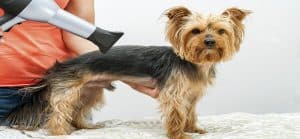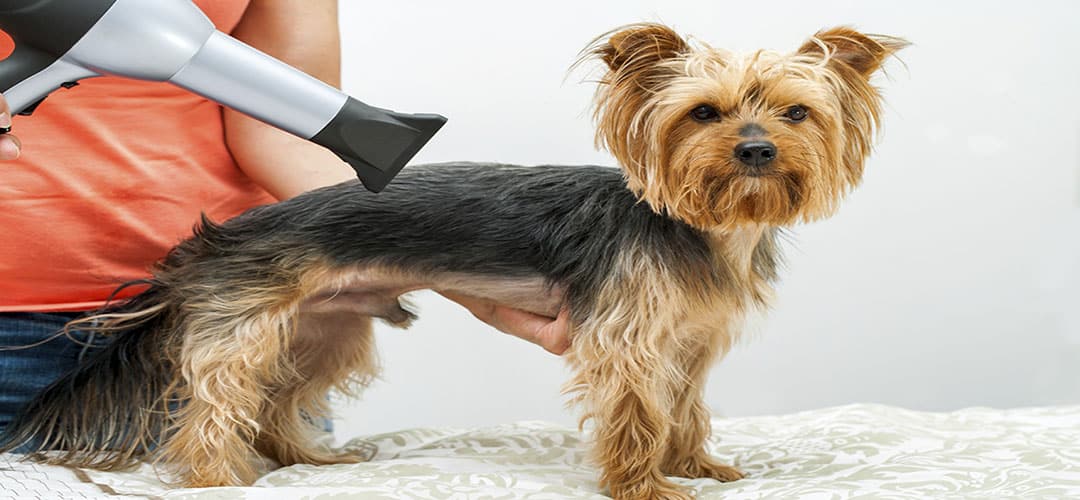Your decision about how to dry each dog will depend on many factors. The drying options available to you are: towels and high-absorbency cloths, blasters, hand dryers, stand dryers, drying cabinets and fresh air.
The skin condition of the dog
If the skin is in poor condition, it may be advisable to avoid using a blaster to remove excess water. The use of artificial heat to dry the coat may also be contraindicated. Check with the dog’s vet!
The anatomy of the dog
Dogs with shortened nasal passages (brachycephalics) should not be put in drying cabinets. A portable dryer (hand or free standing) should be used instead. If the dog has poor muscle condition, using a blaster may be unwise as it could cause bruising.The dog may also chill easily, so a drying cabinet may be a good option.
The health of the dog
Dogs with known heart conditions or breathing problems should not be put in a drying cabinet. Use a portable dryer instead or consider natural drying in extreme cases. Likewise, dogs that suffer from fits and convulsions should not be placed in a drying cabinet.
Use a portable dryer instead or, in extreme cases, consider natural drying. Old or infirm dogs should be dried as quickly as possible as they can chill easily. Consider using a drying cabinet if the dog is otherwise healthy but ensure the dog is supervised and monitored at all times.
The temperament of the dog
If the dog is sen sitive to noise, a blaster would be unsuitable, as would a noisy portable dryer. Consider using a drying cabinet. If the dog is very nervous and panics easily, a drying cabinet would not be a wise option, whereas a portable dryer can be switched on and off, or moved away from the dog where necessary.
sitive to noise, a blaster would be unsuitable, as would a noisy portable dryer. Consider using a drying cabinet. If the dog is very nervous and panics easily, a drying cabinet would not be a wise option, whereas a portable dryer can be switched on and off, or moved away from the dog where necessary.
A dog that shows signs of aggression should not be put into a drying cabinet in case you cannot get him out again.
The type and quality of the coat
A coat that needs to be dried straight for styling will go curly very quickly in a drying cabinet and the quality of your work may be compromised. Very long coats may become knotted by the velocity of a blaster, and long coats may form into “whip” knots when exposed to the circular airflow of a drying cabinet.
Very dense coats benefit from the use of a blaster whereas finer coats may be easily damaged.
Short coats will not lie sleek on the body if they have been blow dried against the natural direction of the coat growth by drying cabinets or portable driers.
The dog may have a coat that requires two different methods of drying if it is to be styled. For example, the English Cocker Spaniel has a short smooth body coat but longer leg, ear and body furnishings that need to be stretched and dried straight for more even trimming.
There are several methods or procedures that can be used to dry the dog:
- towel drying
- blasting
- cabinet drying
- natural drying
- stretch drying
- fluff drying.
Each one serves a different purpose and each gives a different finished or final effect. The method you choose depends on how you intend to complete the grooming session, and whether you will be styling or trimming the coat after the bath (and therefore need to prepare it correctly), or whether the dog is just being bathed to clean his coat and preparation for styling is not necessary.
In either case, you need to make sure that the dog is drip dry before he leaves the bath.

